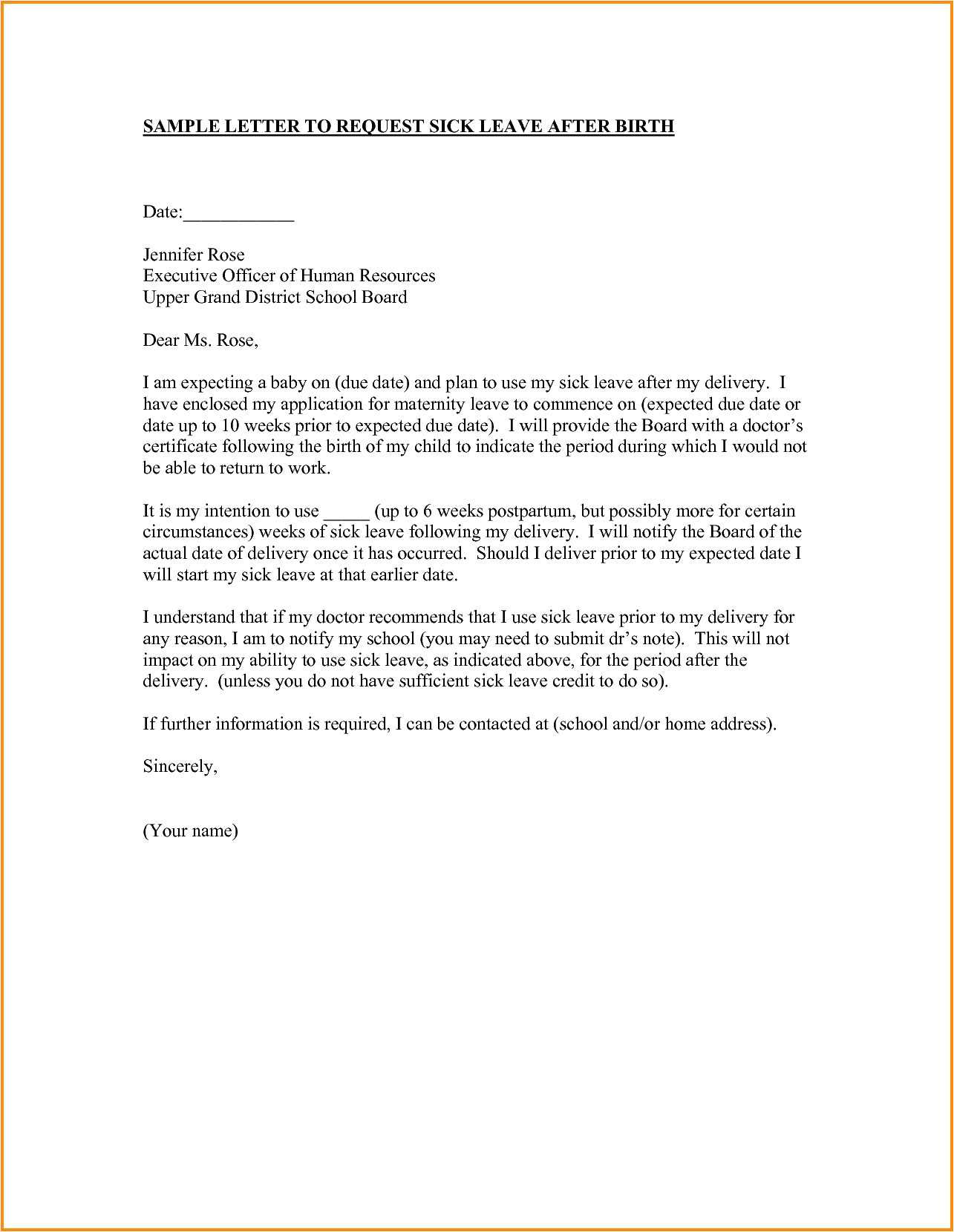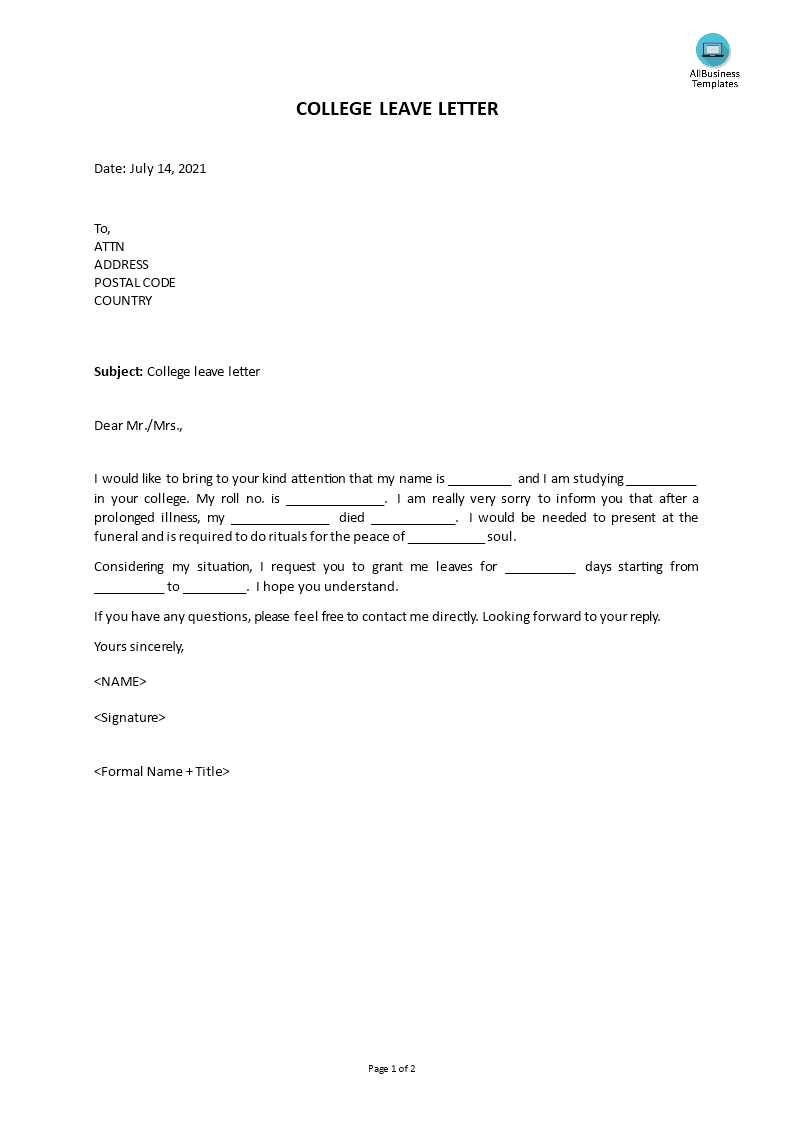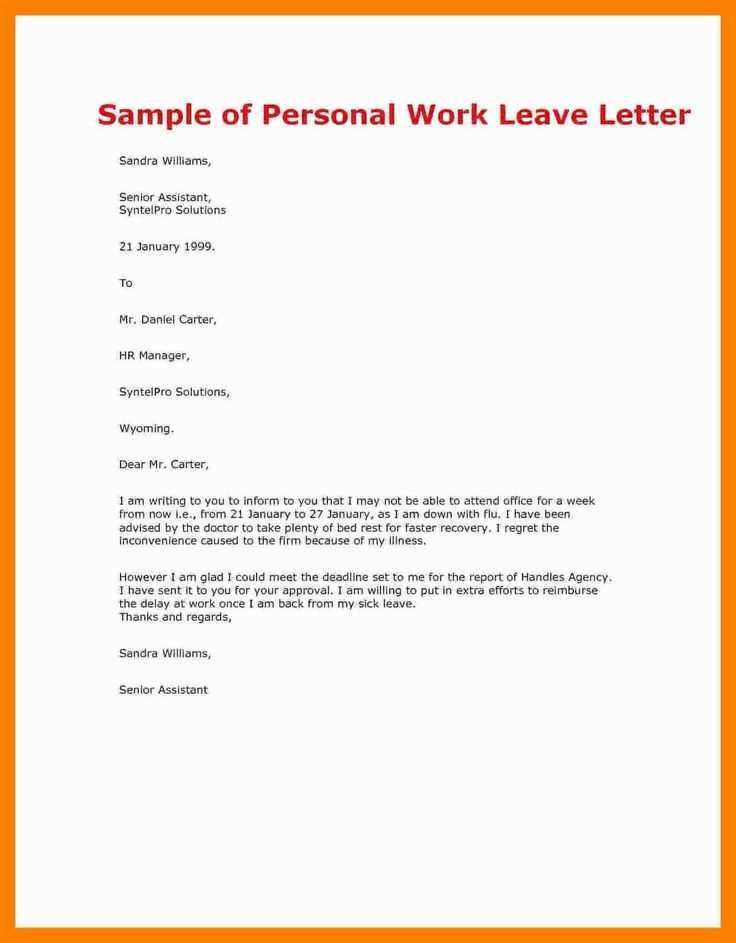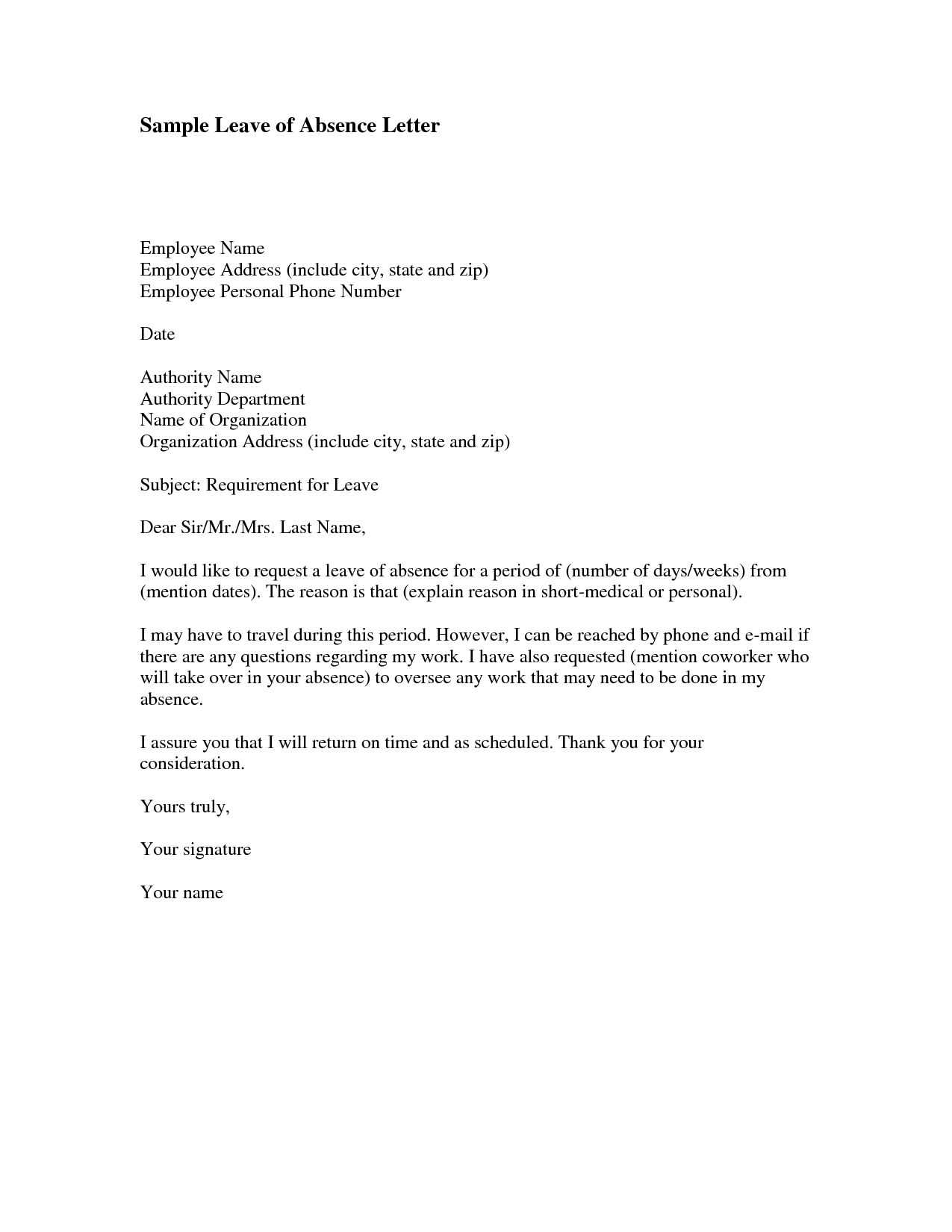Leave of Absence Letter Template for Employers

Managing employee time-off requests efficiently is a crucial aspect of running a smooth operation. When a worker needs to take time away for personal or medical reasons, having a clear and formal communication method is essential. This helps ensure that both parties are aware of the terms and expectations during the absence period.
Key Elements to Include in the Communication
When drafting the document for an employee, several essential details should be included to make sure all information is clear. These components help avoid confusion and ensure that both the individual and the organization are on the same page regarding the time off.
- Dates of the Leave Period: Specify the exact start and end dates for the absence.
- Reason for Time-Off: Include a brief explanation for the request, whether it’s for health, personal matters, or any other reason.
- Work Arrangements: Describe any arrangements for handling responsibilities during the absence, such as delegating tasks or assigning a substitute.
- Return Date: Clearly mention when the individual is expected to resume work.
Steps for Crafting the Request

Creating the communication involves a few simple but essential steps. These will help maintain professionalism while also addressing the needs of the employee.
- Begin with a formal greeting and state the purpose of the document.
- Provide all the relevant details, including the dates, reason, and any necessary arrangements for covering work.
- Conclude with a statement of understanding and an invitation for the employee to reach out if needed.
Why This Approach Is Beneficial

By following a standardized process for requesting time away, both employees and organizations benefit from clarity. This reduces misunderstandings and ensures a more efficient handling of work schedules, ultimately promoting a healthy work environment.
Understanding Time-Off Requests and Approvals
Managing requests for personal time away from work is an essential part of any workplace. Properly handling these situations ensures that operations run smoothly while maintaining a positive relationship with the workforce. It involves clear communication and understanding between the individual and the organization regarding the terms, expectations, and potential adjustments during the period of absence.
How to Create a Formal Request Document

To maintain a professional tone and clarity, it is important to structure the written request carefully. The content should reflect the requester’s intentions while being clear about the specifics of the situation. A well-crafted document helps avoid any confusion and establishes a mutual understanding of the conditions surrounding the time-off.
Key Information to Include
When crafting such a document, ensure the following details are included:
- Exact Dates: Clearly outline the period the individual will be unavailable.
- Reason for the Request: Briefly explain the nature of the request, whether personal, health-related, or another reason.
- Work Coverage Plans: Detail how the work will be managed in the individual’s absence, such as delegating tasks or designating a temporary substitute.
- Return Schedule: Include the date when the person is expected to resume their duties.
Common Reasons for Time-Off Requests
There are numerous reasons why individuals may need to step away from their work. Some of the most common causes include:
- Health Issues: Both short-term and long-term medical conditions may require individuals to take time off.
- Family Emergencies: Situations such as caring for a sick family member or attending to urgent personal matters.
- Personal Time: Employees may need time for personal reflection or to handle private affairs.
Legal Considerations for Managers
There are certain legal aspects that managers must consider when handling requests for time away. These include ensuring compliance with labor laws and company policies, as well as providing fair treatment to all employees. Understanding legal rights, such as the protection against discrimination or unfair treatment, is critical when approving time-off requests.
Approaches to Effectively Manage Absences
Approving time-off requests should be done with consistency and fairness. Clear guidelines on how requests are handled can help prevent misunderstandings and ensure smooth transitions. Having a set process in place for evaluating and approving requests is key to maintaining both operational efficiency and employee satisfaction.